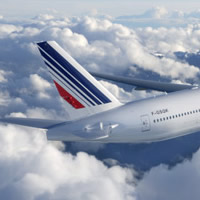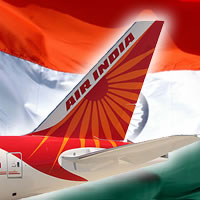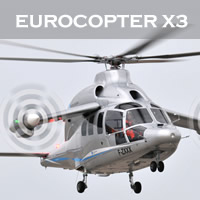Humans are in a constant march to push back the boundaries of the unknown, including their fascination with speed. Commercial supersonic transport (SST) began in 1976 when the Concorde entered service, and remained for the next 27 years.
Humans are in a constant march to push back the boundaries of the unknown, including their fascination with speed. Commercial supersonic transport (SST) began in 1976 when the Concorde entered service, and remained for the next 27 years. The Concorde cruised at more than twice the speed of sound. The human thirst for speed was sort of quenched, then ….
A moment in History - The Crash of Air France Flight 4590
Ten years ago, 25th July 2010, Air France Flight 4590 departed from Paris’ Charles de Gaulle airport bound for New York’s JFK airport. The flight lasted less that two minutes before the crashing into a nearby hotel killing all 109 passengers and crew and four people on the ground.
Aviation industry experts failed to find conclusive evidence of what caused the crash, but the French air accident investigating authority, BEA, concluded that the accident was of “single cause” origin. The BEA posited that the accident was caused by a short titanium strip left on the runway by a Continental aircraft which had taken off four minutes earlier. The metal strip caused the Concorde’s tire to burst, causing the rubber to be flung up onto the underside of the wing. This ruptured the fuel tank, leading to a fuel leak, and subsequently igniting the engine. The aircraft then became uncontrollable, and resulted in crash.
Despite a criminal investigation and legal proceedings against Continental, many questions remain unanswered. These include:
- a 1981 report by the National Transportation Safety board (NTSB) which accused Air France of lax procedures and a lack of action being taken to remedy the causes of four potentially catastrophic tire bursts which had occurred during Concorde take-offs;
- claims that the aircraft seemed to be on fire immediately after the takeoff roll began;
- disagreement over the possible role played by a combination of the plane’s take-off weight, its speed, and prevailing wind conditions; and
- the failure Air France’s maintenance staff to replace or renew a vital component of the aircraft’s landing gear, the ‘spacer,’ during routine maintenance which was carried out a few days before the crash.
This crash, of course, led to the eventual cessation of all Concord flights.
Supersonic Transport (SST)
The only two supersonic aircraft to enter regular passenger service were the Concorde and the Tupolev TU-144. While the Concorde was better known, it was the TU-144 which first took to the sky, making it’s maiden flight in December 1969, two months prior to it’s rival. Although the Tu-144 was comparable to the Concorde, it is believed that a lack of the passenger market in the Soviet Union and severe safety issues caused them to be withdrawn from service after only 55 scheduled passenger flights.
The development of SST aircraft has serious drawbacks and design challenges including, noise generation from sonic boom, excessive weight and expensive materials. In the USA, SST was seen as particularly offensive due to its sonic boom and eventually Congress dropped funding for the US SST program in 1971, and banned all overland commercial supersonic flight.
Before pulling the plug, the Boeing 2707 was being developed as the first American SST. Boeing won a competition for a government-funded contract to build the SST, but rising costs and the lack of a clear market led to its cancellation in 1971 before two prototypes were completed.
What’s on the Horizon
Japan’s space agency JAXA has an ongoing supersonic transport research program. In 2005, they reported the successful test of an 11.5m-long propotype of its Next Generation Supersonic Transport at Australia’s Woomera range. In 2008, JAXA announced a collaborate with NASA to conduct joint research on Sonic Boom Modeling. JAXA hopes the 300 seater Next Generation Supersonic Transport would be flying by 2015. Compared with the Concorde, the new design will fly at roughly the same speed (Mach 2), and have twice the range.
For those business jet customers who are prepared to fork out big bucks for high speed travel, several projects are currently on the way, including Aerion Corporation’s Aerion SBJ and Tupolev’s Tu-444.
What we Know
The need for speed continues to drive us despite the numerous technological hurdles and the financial setback caused by the global economic recession. The success of the SST program in large part will depend on a sustainable passenger market, reducing sonic boom, and keeping the passengers and crew safe as risks increase with speed.
Apart from the high cost of tickets, what would prevent you from flying supersonic?








 I am Wayne, a career air traffic controller. Engage me while I share my thoughts, experience, and news from the aviation world.
I am Wayne, a career air traffic controller. Engage me while I share my thoughts, experience, and news from the aviation world.
11 Responses
It is really hard to believe it has been ten years already since the Concorde crashed. The plane might have been uneconomical and uncomfortable, but an amazing aircraft. I just feel lucky to have one in my home town at the Museum of Flight, which it will stay restored!
David
Yes! 10 years already. Now, how lucky are you to have a Concorde permanently displayed in your backyard?
I remember that Concorde crash too. I was working for a stock broker at the time of the incident. The brokerage firm thought that the crash would be a major market mover. Lots of wealthy people and high profile businessmen used to travel on that. The theory was that if a company’s CEO was on that plane when it crashed, then it could be really bad news for that company. Sell their stock short and make a profit.
Crashes are usually sad events in the aviation world, but for the Concorde, it was devastating because it was the first SST crash. The sad thing is that there is no conclusive evidence of the cause of the crash 10 years later.
I love flying, but I would be lying if I said it doesn’t get tiring. What would keep me away from the supersonic is the same thing that keeps me from flying generally: it’s an awful lot of time and an awful lot of inconvenience at the airport.
Still. Reading this does make me want to travel.
You said it. The formalities at the airport is the thing the puts the speedbump in air travel. You probably spend more time at the departure and arrival airports than being on the aeroplane.
Right. And then the plane itself can be a very exhausting ride - I never sleep well on planes, I just “sleep.” There’s a big difference.
And we are so happy to have a Concorde museum in Barbados where British Airways has loaned the Barbados government a Concorde… A true must see experience, and if your flight stop for 3 hours in Barbados, just walk across the street. She is sitting there in all her glory.
I had a glimpse of it on a few occasions from the window on my plane when I passed through Grantley Adams International.
I am constantly searching on the internet for strategies that can assist me. Thanks a lot!
I sort of discovered your web site by mistake, but your blog site captured attention i thought that I might post to let you know that I really like it.